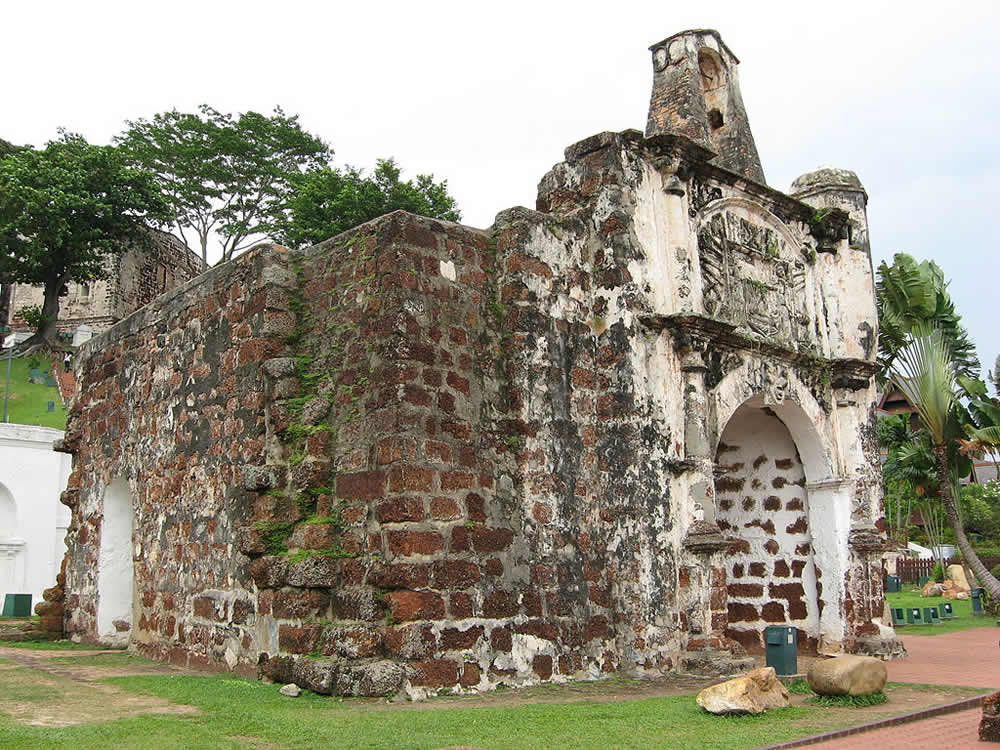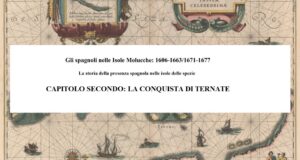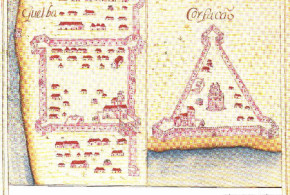Written by Marco Ramerini. English text revision by Dietrich Köster.
THE PORTUGUESE CONQUEST
At the time of the Portuguese arrival in the Asian seas, Malacca thanks to its strategic position on the strait bearing the same name, was a remarkable trading center for the trade and shunting of spices. At that time, Malacca was ruled by a Muslim Sultan. The town extended its influence over a vast territory, which included the whole Malay Peninsula. Its port was frequented by a multitude of ships and merchants from all the Asian nations of the time: Arabia, Persia, China, India, Japan, Indonesia, Ceylon and Bengal. In it were gathered and sold all the Asian spices: pepper, cloves, ginger, cinnamon, nutmeg etc.
After their arrival in India the Portuguese soon became aware of the importance of the city. An expedition sailed to Malacca in 1509 but failed and many of the Portuguese were captured and imprisoned by the Sultan. In 1511 the Viceroy of India, Afonso de Albuquerque, decided to organize an expedition destined to conquer Malacca. At the head of 1,100 – 1,200 men and 14 ships Afonso de Albuquerque arrived in view of Malacca in June 1511 and immediately demanded the rescue of the Portuguese, who were taken prisoners in the 1509 expedition. The Sultan tried to gain time to strengthen the town defenses. He was well aware of the small number of Portuguese troops and was confident of his powerful army of 20,000 men and 2,000 guns.
Albuquerque wasted no time. At dawn of 25 July 1511 the Portuguese attacked the town concentrating the assault on the bridge of the river dividing the town. After a fierce battle the bridge was conquered by the Portuguese, but at nightfall they were forced to retreat. After some days of preparations the Portuguese renewed the attack on 10 August 1511. Albuquerque had the assistance of some Chinese junks, which anchored in the port.
The use of junks, offered by the Chinese merchants, was decisive, as these junks were used as a bridgehead. This time the attack was successful and the Portuguese finally succeeded in establishing a bridgehead in the town. Then there were several days of siege, during which the Portuguese bombarded the city. On 24 August 1511 the Portuguese again attacked only to discover that the Sultan had escaped. Malacca was now in Portuguese hands. They sacked the town, but following Albuquerque’s orders, they respected the property of those who sided with them.
B. W. Diffie and G. D. Winius in the book “Foundations of the Portuguese Empire 1415-1580” write: “the capture of Asia’s greatest trading city by a mere 900 Portuguese and 200 Indians must rank as an event in the history of European expansion no less stunning than the better known conquest of Tenochtitlan by Hernando Cortés”.
MALACCA A PORTUGUESE TOWN
Malacca was one of the three key-points with Goa and Hormuz, which gave Portugal the control over the main Asiatic trade routes. After the conquest Albuquerque immediately ordered the building of a fortress on the south side of the river. This fortress was called “A Famosa” and it was finished in November 1511. Ruy de Brito Patalim was appointed Captain of the “Fortaleza de Malaca” and about 500 Portuguese soldiers were left as garrison. Shortly thereafter Albuquerque prepared the ships for the return with the booty of Malacca. However, during the return voyage to Goa his ship “Flor do Mar” sank during a storm and all the treasures fetched in Malacca were lost. Several Florentine merchants took part in the Portuguese enterprises in Asia. Amongst them Giovanni da Empoli was present in Malacca during the siege and the conquest. He described his experiences in an interesting letter to his father.
After the conquest of Malacca Portugal’s policy on the Malay Peninsula was either to establish alliances with local rulers or to convince the adjoining Kingdoms to accept Portuguese suzerainty. From his base at Johore the old Sultan of Malacca repeatedly attacked Malacca in 1517, 1520, 1521 and 1525. At last, in 1583, a peace treaty was signed. Malacca was repeatedly under siege in 1550, 1567, 1571. The main enemies were Johore and Atjeh (in Sumatra). In Malacca Albuquerque established a new administration, minted a new currency and built a wooden chapel close to the fortress. Adjoining the fortress a stone church dedicated to “Nossa Senhora da Anunciada” was erected in 1521 and later to “Nossa Senhora da Assumpção”. On 4 February 1558 this church was consecrated as a Cathedral. Many Portuguese “Casados”, mostly artisans, merchants or farmers, settled in Malacca. In 1532 the Confraria da Misericórdia was founded and a beautiful wooden hospital for the poor was also built. The church also started a school. Active missionary work began in 1545 with the arrival of St. Francisco Xavier. In 1552 was set up the “Câmara” (Municipal Council) of Malacca.
In 1602-1603 the Dutch blockaded Malacca by sea, but this was only a first timid attempt. In 1606 Johore and the Dutch concluded an alliance against the Portuguese and in 1607 they set again the town under siege. Reinforcements from Goa aborted the attempt. Eredia estimated that the Christian population in Malacca was around 7.400 in 1613. There were eight parishes in the town. In 1629 Atjeh made a new great effort, but this time again the Portuguese were victorious. The Dutch made several fruitless attempts between 1623 and 1627 and in 1633 a blockade was set up.
The last siege of Portuguese Malacca began in June 1640 when a combined Dutch-Johore fleet of 1,500 Dutchmen, 1,500 Malays, 12 Dutch ships, 6 sloops and 40 Johore vessels were sighted off the Malacca port. The siege was extremely hard and nearly 1,500 Dutchmen lost their lives. After five months of siege the Portuguese defenders were without gunpowder and with a severe scarcity of food. Despite the difficulties under the command of Dom Manuel de Sousa Coutinho, who was sick, they were able to hold out the siege. At the time of the Dutch attack in June 1640, there was a garrison of about 50 Portuguese soldiers, more than 300 Portuguese “Casados” with their families and 2,000 or 3,000 mestiços and native inhabitants in Malacca. On 14 January 1641 Dutch commander Willemsoon Kartekoe ordered the last desperate assault. The Portuguese defenders made a fierce final resistance in the Fortaleza Velha and the Dutch were finally driven back.
In desperation the Dutch commander offered to the Portuguese honourable terms of surrender. The brave (and dying) Portuguese commander accepted the generous terms. Dying two days later he was buried by the Dutch with military honours in the church of São Domingo. The city of Malacca was thus in Portuguese hands from 24 August 1511 till 14 January 1641.
The descendants of the Portuguese of Malacca speak Creole Portuguese (Papia Kristang) to this day. They are Christians and have Portuguese surnames. The Eurasian community has 12,000 members on the Malay Peninsula.
Dutch Malacca (1641-1795, 1818-1825).
OTHER PORTUGUESE FORTIFICATIONS IN THE VICINITY OF MALACCA:
ILHA DAS NAUS: the first line of defence at sea of the fort of Malacca
The Portuguese called Ilha das Naus (Pulau Java or Pulau Melaka) a small island outside the harbour of Malacca. In 1606/1615 the Portuguese stationed a battery on this island. On the Ilha das Naus the Portuguese planned a fort of 60 square feet. As late as 1638, however, only the foundations of the Ilha das Naus fort had been laid and its walls were still not finished when the Dutch invasion force sailed into Malacca Harbour two years later. For this reason the Portuguese had to abandon their partly finished fort without a shot being fired in 1640. Shortly after the conquest of Malacca the Dutch completed the Portuguese fort on the Ilha das Naus (now called Red Island).
MUAR: a Portuguese fort on the Malay Peninsula
The Portuguese had a second fort on the Malay Peninsula. This fort was in Muar and does not exist anymore. It was built by Eredia at the mouth of the Muar river in 1604. The fort was triangular with round ramparts.
PACEM-PASSUMAH: a Portuguese fort in Sumatra
The actual name should be Pueek ( 05.09N -97.13E ). The fort was built in 1520/21 and its life was short. Gaspar Correia is positive (Lendas da Índia, Tomo II ,Parte II ,pp.795 : “…e puserão fogo à fortalesa, que tudo foy feito em cinza: o que foy em Maio de 1524.” The fort was square-shaped with a wooden “tranqueira” (palisade) and was built near the seashore.
For information on Pacem my thanks to Nuno Rubim.
BIBLIOGRAPHY:
– Fernandis, Gerard “Save our Portuguese heritage conference 95 Malacca, Malaysia” 103 pp. Gerard Fernandis, 1995, Malacca, Malaysia. A very interesting book on the Portuguese heritage and history of Malacca.
– Irwin, G. W. “Melaka fort” In “Melaka – The Transformation of a Malay Capital ca. 1400-1980” Vol. one Edited by Kernial Singh Sandhu, Paul Wheatley. p. 195-241. The history of the fort of Malacca during the Portuguese and Dutch time.
– Leupe, P.A. “The siege and capture of Malacca from the Portuguese in 1640-1641” JMBRAS vol, 14, pt. 1 (1936) pp 1-176. The occupation of the straits of Malacca 1636-1639, the siege and the capture of Malacca 1640-1641, commissary Justus Schouten’s report on his visit to Malacca 1641.
– Noonan, L. “The Portuguese in Malacca: a study of the first major European impact on East Asia” In: “Studia” N° 23 April, pp. 33-104 Centro de Estudos Históricos Ultramarinos, 1968, Lisbon, Portugal. Very interesting. The coming of the Portuguese, Portuguese rule in Malacca, Malacca’s role in Portuguese colonial strategy, Portuguese-Asian relations in Malacca, the end of the Portuguese rule.
– O’Neill, Brian Juan “A tripla identidade dos portugueses de Malaca” In: “Oceanos” n° 32 Outubro – Dezembro 1997, pp. 63-83
– Sandhu K. and Wheatley P. ” Melaka; The Transformation of a Malay Capital ca. 1400 – 1980″ 816 + 784 pp. 2 volumes, illustrated throughout OUP / Institute of Southeast Asian Studies, 1983, Kuala Lumpur, Malaysia. A complete study on Malacca town from the beginning till today, with a bibliography of Melaka studies.
– Silva Rego, Padre António da “A Comunidade Luso-Malaia de Malaca e Singapura ” In: Actas do V Colóquio Internacional de Estudos Luso-Brasileiros, vol. I, Coimbra, 1964, pp. 507-512. Also in: Silva Rego, Padre António da “Dialecto Português de Malaca e outros escritos” 304 pp. (Cadernos Ásia) CNCDP, 1998, Lisboa, Portugal.
– Silva Rego, Padre Antonio da “A Cultura Portuguesa na Malaia e em Singapura “Comunicação apresentada à reunião conjunta da Academia Internacional da Cultura Portuguesa e do Conselho Geral da União das Comunidades de Cultura Portuguesa, 28 May 1968. Also in: Silva Rego, Padre António da “Dialecto Português de Malaca e outros escritos” 304 pp. (Cadernos Ásia) CNCDP, 1998, Lisboa, Portugal.
– Sousa Pinto, P. J. de “Portugueses e Malaios: Malaca e os Sultanatos de Johor e Achém 1575-1619” 334 pp. maps, Fundação Oriente, 1997, Lisbon, Portugal. Malaca e o Estado da Índia: enquadramento económico, quadro político militar; Malaca e a geopolítica dos estreitos 1575-1619, Portugueses e Malaios, a cidade de Malaca.
– Sousa Pinto, P. J. de “Capitães e casados: um retrato de Malaca nos finais do século XVI” In: “Oceanos” n° 32 Outubro – Dezembro 1997, pp. 45-60
– Sta Maria, Bernard “My people, my country. The story of the Malacca Portuguese community” 236pp. Malacca Portuguese Development Centre, 1982, Malacca, Malaysia. Draws attention to role of lay groups in keeping the faith particularly during the Dutch period.
– Sta Maria, Joseph “Where do we go from here” 89 pp. Joseph Sta Maria , 1991, Malacca, Malaysia.
– Subrahmanyam, Sanjay “Commerce and conflict: two views of Portuguese Melaka in the 1620s” In: Journal of Southeast Asian Studies, n° 19(1), March 1988, pp.62-79.
– Teixeira, Manuel “The Portuguese missions in Malacca and Singapore (1511-1958)” ? 3 vols. Agência Geral do Ultramar, 1961, 1963, Lisbon, Portugal.
– Thomaz, Luís Filipe Ferreira Reis “Early Portuguese Malacca” 196 pp. CTMCDP – IPM, 1998, Macau From: Thesis “Os Portugueses em Malaca: 1511-1580” Faculdade de Letras da Universidade de Lisboa, 218 pp. maps 2 vols. 1964, Lisboa. This volume comprises three essays on the city of Malacca and its society during the first decades of Portuguese rule.
– Thomaz, Luis Filipe Ferreira Reis “The Indian merchant communities in Malacca under the Portuguese rule” In: Souza, T. R. de (ed., ) “Indo-Portuguese History: Old issues, new questions” Concept, New Delhi, 1985, pp.56-72.
 Colonial Voyage The website dedicated to the Colonial History
Colonial Voyage The website dedicated to the Colonial History





































































